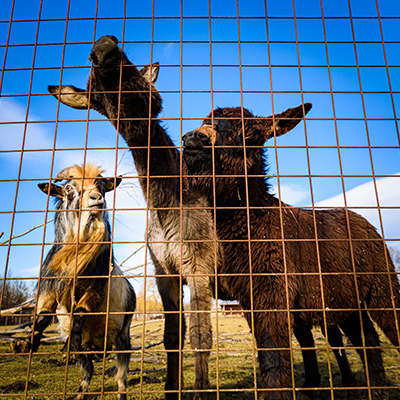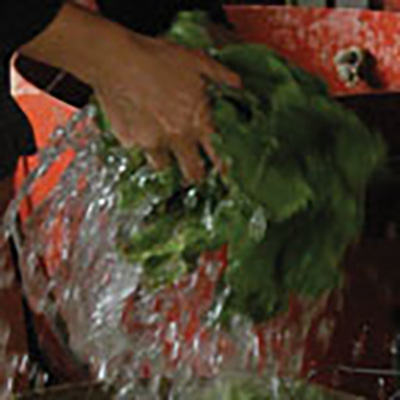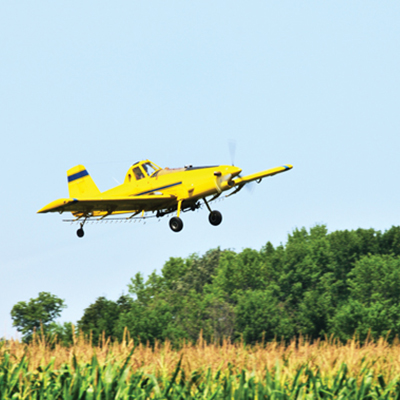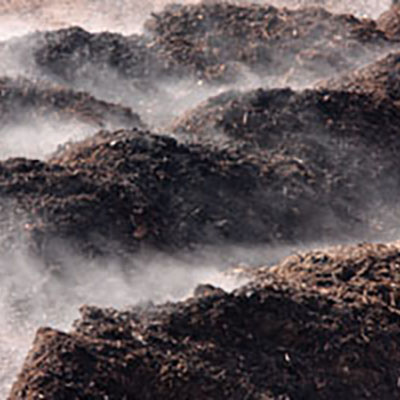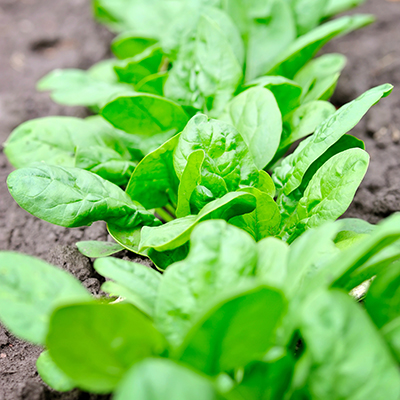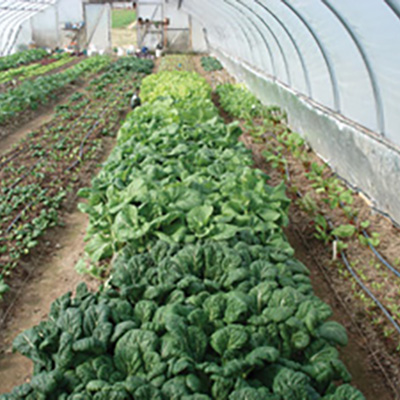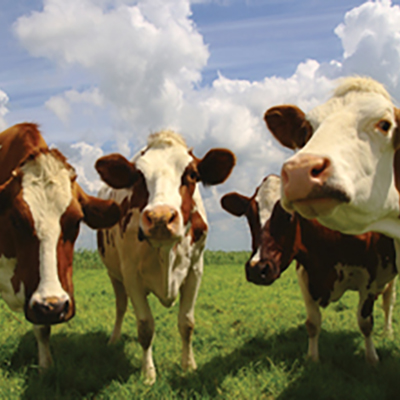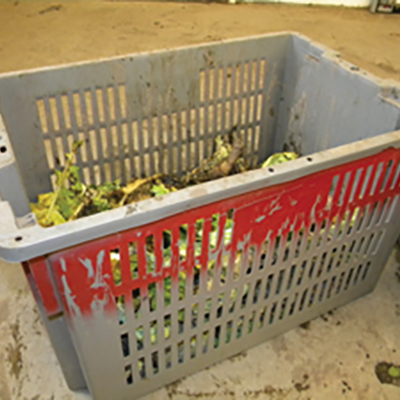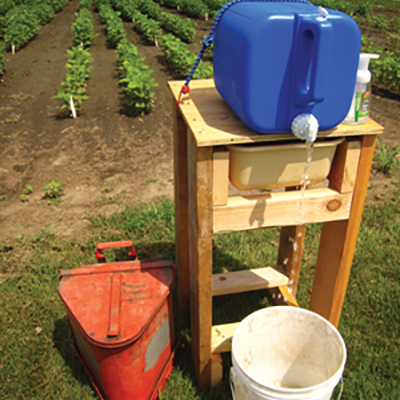This article appeared in the November/December 2009 issue of Growing for Market.
As 2009 draws to a close, food safety is high on the national agenda. Fruit and vegetable growers are facing pressure to comply with food safety standards, known as Good Agricultural Practices (GAPs), and wholesale buyers are increasingly requiring a third-party GAPs certification. Although certification is technically still voluntary, nearly everyone in the produce industry agrees that mandatory certification is on the horizon for those who sell wholesale.
Whether growers who sell at farmers markets and CSAs will be forced to comply with food safety measures remains to be seen. In general, few farmers oppose the concept of food safety standards because they don’t want their customers to get sick from their products. But GAPs will certainly be considered an onerous burden by many small farmers who are accustomed to complete freedom in how they grow and harvest. GAPs certification requires written documentation of a food safety program, including standard operating procedures and logs of numerous farm chores such as worker training, bathroom cleaning, and container cleaning.
Growers’ organizations are working to ensure that any requirements be scale-appropriate, but those details have yet to be worked out. Growing for Market is following this issue closely, and will keep you updated, especially as small-scale growers begin to seek certification next year.
Although the prospect of more regulation, expense and paperwork is disheartening, some growers are bowing to the inevitable and getting a head start on GAPs certification. “The GAPs certification is basically a plan of common-sense issues that growers need to have addressed about food safety and sanitation practices,” said Van Weldon of Wood Duck Farm in Texas, who plans to seek certification early next year. “While some work may be required on the part of the grower, creating and implementing a plan that custom addresses these health topics for that particular farm is in the best interest for everyone. I think everyone would like to know that the tomatoes or greens they are eating were not irrigated from a pond directly downhill from a feedlot. For better or worse, I will not be surprised in the future if GAPs certification becomes a prerequisite to purchasing liability insurance.”
Laura Kelsay Edwards, director of the Tacoma, WA, farmers market, said a GAPs training at an annual conference this year was well-attended. “I was surprised to see many farmers voluntarily take this course,” she said. “It is plain to see that growers and other food industry professionals really want to know more about making food as safe as possible.”
She said the participants received a certificate they could display at market attesting to the fact that they took the training. However, this should not be confused with third-party certification, which requires an inspection and paper audit.
Although GAP inspections have to be done during the harvest season, the prelude to certification is best accomplished in the off-season. Now is the time to read the standards, assess your own farming practices and facilities and start writing the documents you will need if you decide to get certified. Alternatively, it’s a good time to see whether there are standards that will put you out of business or change your marketing plans. It’s also a good idea to know the specifics of certification if you want to try to influence legislation or regulation.
Background
Because produce has been blamed for several high-profile outbreaks of food-borne illness in recent years, USDA and FDA have developed standards called Good Agricultural Practices, which pertain to growing food, and Good Handling Practices, which pertain to postharvest handling, packing and transportation.
USDA has developed a GAP/GHP audit program to certify fruit and vegetable producers who use good practices on their farms. USDA will do the inspections and audits by its staff or with contracted personnel from state agriculture departments. Several private companies also offer GAP certification.
USDA charges $92 an hour for the inspection and audit, which can usually be completed in two to six hours, depending on size of the farm and number of crops covered, said Kenneth Peterson,USDA’s audit programs coordinator.
However, certification may not be necessary yet for many growers, even those who sell wholesale. Van Weldon, quoted above, said that the wholesaler he sold to this year required him to sign a letter that he is in compliance with GAPs but did not require him to get the third-party certification.
Jeff Taylor of the Tuscarora Organic Growers cooperative in Pennsylvania said that only one restaurant required GAP certification this year, which caused the cooperative to stop selling there. The 28 members of TOG are not GAP-certified yet but do address food safety issues in their organic certification process.
“I would hope any and all third-party verification processes be streamlined so farmers are not inundated with paperwork,” Taylor said.
Whole Foods Market, probably the biggest buyer of local food, does not yet require GAP certification, said Tom Miller, the head produce buyer for the Southwest region. However, he thinks it’s coming in the next year or two, he said.
Food safety program
A central component of the GAP certification process is a food safety program for each farm; it should include written standard operating procedures and policies to address potential contamination issues including land, irrigation water, manure use, pesticides, equipment and worker health and hygiene. The food safety program can be viewed as putting in writing the common-sense precautions most people take when dealing with food. It does force farmers to think about potential sources of contamination so that they can be mitigated before an audit is undertaken. The sheer number of issues to be addressed makes writing a plan a big project.
Here is an example from a food safety plan written by the Oregon Department of Agriculture to illustrate the kind of information the plan should include:
Any employee who is ill or appears to be ill with a possible communicable disease will be sent home or assigned work away from crop production areas and harvested produce.
If you have an open wound or cut it must be bandaged. If you obtain a wound, cut or have a nosebleed while working, you need to stop working immediately, contact your supervisor and have it attended to. Make sure the area you were working in gets cleaned and disinfected as soon as possible. Discard all product that has come into contact with any blood, and if any came into contact with product containers or transport equipment, disinfect this as soon as possible as well.
The Oregon food safety plan provides a good outline and clear language that farmers can copy in writing their own plans. It can be downloaded at http://www.oregon.gov/ODA/ADMD/docs/pdf/gap_safety_program.pdf.
Training
Some growers may prefer to take a more interactive approach to developing a food safety plan. Extension specialists in many states are working right now to set up training programs for growers in 2010. Do an internet search for Good Agricultural Practices and your state name to see if anything is scheduled nearby. Or call your county Extension agent and find out how you can be notified if anything gets organized.
Cornell University has an online training course that costs $50 and occurs over three weeks. Cornell also hosts a clearinghouse of information and training materials, which can be downloaded or ordered as hard copies. For the online course registration or other materials, go to www.gaps.cornell.edu.
Self-assessment
Once you have read the standards and know the kinds of hazards GAPs is trying to eliminate, you are ready for a self-assessment. USDA has its inspection questionnaire on its website at http://www.ams.usda.gov/AMSv1.0/getfile?dDocName=STELPRDC5050869 so there are no surprises as to what the inspector will be looking for.
The University of California-Davis also has a self-audit booklet that takes you through the issues and provides a list of state collaborators for GAPs assessment. It is at http://ucce.ucdavis.edu/files/filelibrary/5453/4362.pdf.
Several conditions on the farm will result in an automatic failure of the audit:
• The grower doesn’t document the existence of a food safety program, with one person designated to oversee and implement it.
• An immediate food safety risk is present when produce is grown, processed, packed or held under conditions that promote or cause the produce to become contaminated.
• The presence or evidence of rodents, an excessive amount of insects or other pests in the produce during packing, processing or storage.
• Observation of employee practices (personal or hygienic) that have jeopardized or may jeopardize the safety of the produce.
• Falsification of records.
Finding an inspector
If you decide you want to get your farm inspected, you should see if your state Extension or department of agriculture is offering any help with GAP certification. Again, the list of state collaborators in the UC-Davis booklet is a good place to find a contact name. See http://ucce.ucdavis.edu/files/filelibrary/5453/4362.pdf.
You also can contact a USDA Fresh Fruit and Vegetable Inspection Office in your state to inquire about certification. Start at www.ams.usda.gov and search for “Fresh Produce Audit Verification Program” where you will find links to the inspection offices.
Finally, if you are certified organic, contact your certification agency to find out how to proceed with GAP certification.

